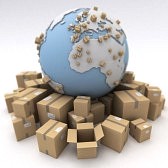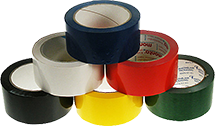Do you know the true cost of your packaging?
If you’re simply taking the total amount you spend on packaging materials (e.g. boxes, tape, void fill and so on) as your packaging cost – you may be missing valuable opportunities to make greater savings and improve the overall efficiency of your packing operation.
In reality, the true cost of packaging takes into account many factors in addition to packaging materials. To help you get the most out of your packaging, the Network Packaging team has highlighted the hidden costs of packaging….
1. Fit for purpose packaging materials
Is the packaging you’re using fit for purpose? You may be using cartons that aren’t the optimum specification to transport your products, or using a cross weave tape when you only need a standard clear or brown parcel tape. Your stretch film might not be giving you a high enough yield or your bubble wrap may not be offering the protection your products require.
Network Packaging can help you to assess your packaging materials and identify where we can improve them or offer new innovations to save you time and money. This may include up or downgrading product specifications or offering alternative solutions such as multi-use cartons (see an example case study by clicking here).
2. Overheads
As well as the actual cost of packaging materials, you need to consider your business’ overheads for storing the packaging. Space can be hard to come by these days, so it’s important you’re making the most of the on-site storage you do have.
Our packaging experts can help you look at ways to reduce storage space utilised and therefore the associated expenditure. Solutions can include redesigning packaging so it’s more compact, reducing the number of packaging lines you use or offering you the Network Packaging stock holding service.
In addition to storage expenses, overheads associated to your packaging include the cost of labour for any packers, warehouse colleagues, purchasing staff and any colleagues involved in the packaging supply chain; any delivery costs; and the cost of packing time.
3. Packaging Waste
Packaging waste can have a significant impact on the true cost of packaging. An example of packaging waste includes packers using excess void fill or bubble wrap. You may have even experienced this when you’ve received a parcel yourself and social media is littered with videos highlighting this type of wastage.
Another example of a common packaging waste problem is tape being over-used. If stored incorrectly (in damp or cold conditions), tape can lose its adhesive properties, so packers will often be using multiple strips of tape to secure a box. Higher usage equals more waste and the increased cost of replenishing stock more frequently.
The Network Packaging team can help minimise your packaging waste by identifying where you may be wasting packaging and why. This will help save you money (less material used) and lower your waste disposal costs. When considering packaging waste, we can also help you look at using packaging that’s made from recycled materials or that’s easily recycled by the end user – lessening waste throughout the whole packaging lifecycle.
Not only is minimising packaging waste beneficial for your business from a cost perspective, it also reduces your environmental impact. With increasing scrutiny on recycling and reducing waste (such as the Government’s packaging producer regulations), it’s essential that all businesses are consciously lowering their waste output.
4. Damages and returns / Reverse Logistics
Are you experiencing returns due to product damage? Product returns can be a bitter pill to swallow as there’s a multitude of costs associated to it, such as refunding customers, the expense of reverse logistics and the impact poorly packaged items may have on your brand’s perception.
Getting goods through the courier network can be tough, so Network Packaging will work with you to re-engineer your packaging to ensure your products get to their destination intact. Our solutions may include alternative void fill options to provide additional cushioning, increasing the strength of your cartons, or completely redesigning your packaging solution. We may also suggest our innovative inflatable packaging system, Airsac, which has been developed specifically for fragile and breakable goods.
If you’re interested in understanding your true packaging costs get in touch with Network Packaging today! We’ll arrange for one of our representatives to conduct a site visit and take you through a detailed packaging cost assessment. You can contact us by calling 01902 496666, by emailing marketing@networkpack.co.uk or by completing our contact form.















